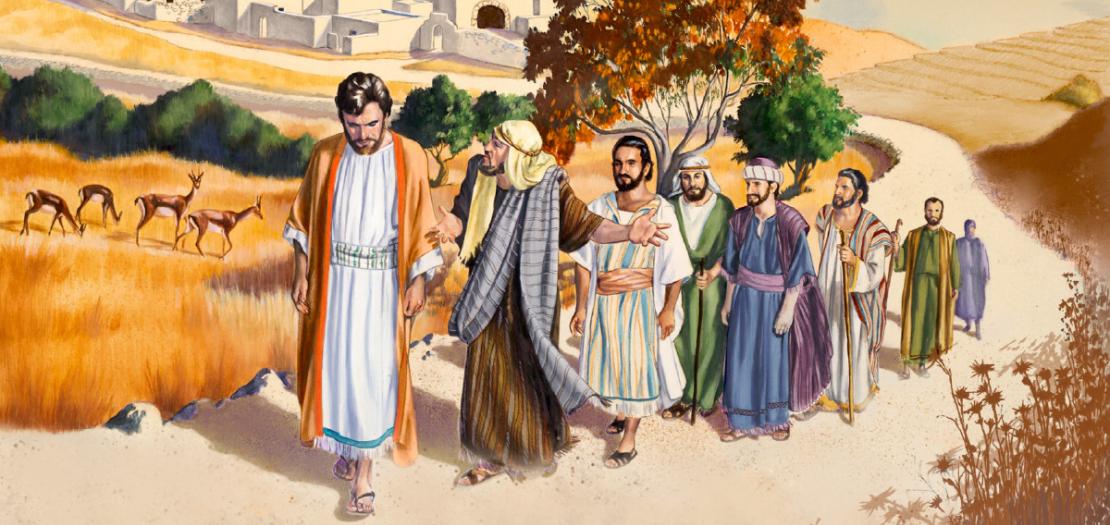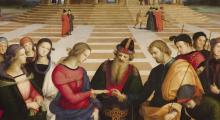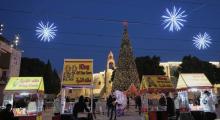Issued by the Catholic Center for Studies and Media - Jordan. Editor-in-chief Fr. Rif'at Bader - موقع أبونا abouna.org

Following is the text of the meditation by Latin Patriarch of Jerusalem His Beatitude Pierbattista Pizzaballa for the 13th Sunday of Ordinary Time, Year C , June 26, 2022:
The Gospel passage that we hear on this Sunday comes from the second part of Luke’s account, the section characterized by the theme of “journey”, which Jesus makes in going from Galilee to Jerusalem.
As we’ve already said, Luke presents the life of Jesus – and later that of the disciple – as a journey, not so much a physical journey, not even a simple movement, as an interior pilgrimage, to arrive at the place of fulfillment, where life is given, gets lost, in faith in Him who does not abandon His children in death.
Life is a journey that has as its primary goal Jerusalem, and as its ultimate goal the Father (to Him, on high, Jesus will be “lifted up” 9:51): from Him we come and to Him we return.
In the passage we have heard, this journey to Jerusalem begins: it’s no coincidence that the term “journey” occurs at least four times.
There is another important word, that occurs several times, but which is lost in the translation from the Greek: Jesus hardens His face (v.51), sends messengers ahead of His face (v.52), and the Samaritans reject Him because His face is turned towards Jerusalem.
Then we can say that the protagonist of this journey is the face.
It is the face of the Lord that sets out on the journey: in some preceding verses, this face, on the mountain, appeared transfigured, it became “other”. And will be even more “other” at the end of the journey, where we will find it disfigured by the Passion, and then again luminous on the morning of Easter.
But no journey is ever taken for granted: one must decide to set out on the way, and that is exactly what Jesus does today.
He did many signs, he performed many prodigies, but it does not stay there, He does not stop, He is not satisfied with having healed someone, with having announced to someone the good news of the Father’s love.
At the beginning of His public life (Lk 4:16ff), in the synagogue at Nazareth having initiated His ministry in the light of a Word of grace and liberation for all; and later He set out on the way (Lk 4:30). Now Jesus goes all the way, taking the responsibility of staying on a way that will lead Him to death because he knows that only in this way will he fully reveal the Father of the Father.
For that reason, He hardens His face, and it is the hardness of one who does not retreat, who is determined to go to the end, to bring His journey to an end, and to fulfill His hour. It is the power of love, that is not a coercive power, but a meek power. Meek and invincible.
In the Gospel passage, there is also another hardness, very different from what we read on the Face of Jesus: it is the hardness of the disciples James and John. Faced with rejection and hostility, faced with the mystery of evil, they decide to respond with violence. The reference is to the prophet Elijah (2Kings 1:10-15), who brings fire to fall on all the Lord’s enemies, thinking in this way to defend God, thinking to resolve the problem of idolatry by destroying idolaters.
But this is not the hardness that saves. That is not the hardness of the face; it is the hardness of heart, the hardness of stone heart, of which the prophets speak (see Ezek. 36:26). And the Lord saves us by changing the heart of stone into a heart of flesh, that is, in hearts that, faced with the mystery of evil, know how to feel compassion, know how to take on the weight of destiny of their brothers.
The hardness of the disciples excludes, destroys, kills, distances, and rejects.
The hardness of Jesus embraces, forgives, welcomes, and takes the burden.
Actually, a fire will descend on the Samaritans, but it will be of the Holy Spirit (Acts 8:17-18), and will just be John, together with Peter, who sets out from Jerusalem to lay hands on them, when it was learned that the Samaritans heard the Word of God.
Then our journey, the way of the disciple, is a journey that must lead to knowing this good Face. Not a face of a god as we imagine him (winning, powerful, violent…), but the Face of God on the way to Jerusalem.
To make this journey, a break is needed: and it is what Jesus asks the three that He meets on the road. They are three different cases, three different situations. In a few, cases it is Jesus Who calls, in others it is they who offer themselves.
But what unites all three characters is that each one, if he wants to follow the Lord, he must take a leap.
He must create a void, space; he must leave the heart of stone to receive a heart of flesh. That is, to enter a different logic, where we are not at the center, not even our most sacred commitments, nothing that gives us security, power, glory; nothing to which we can cling to hold a grip on life in our hands.
He must leave the face of his god, and encounter that of Jesus. Thus, one begins the journey.
Otherwise, we follow the Lord, but he does not change the heart, does not transform the logic, but remains worldly.
One can have many good intentions, but the journey does not arrive in Jerusalem, does not turn to the Father, unless one converts to the Face of Jesus, to His Face made hard by the tenderness of love.
+ Pierbattista







